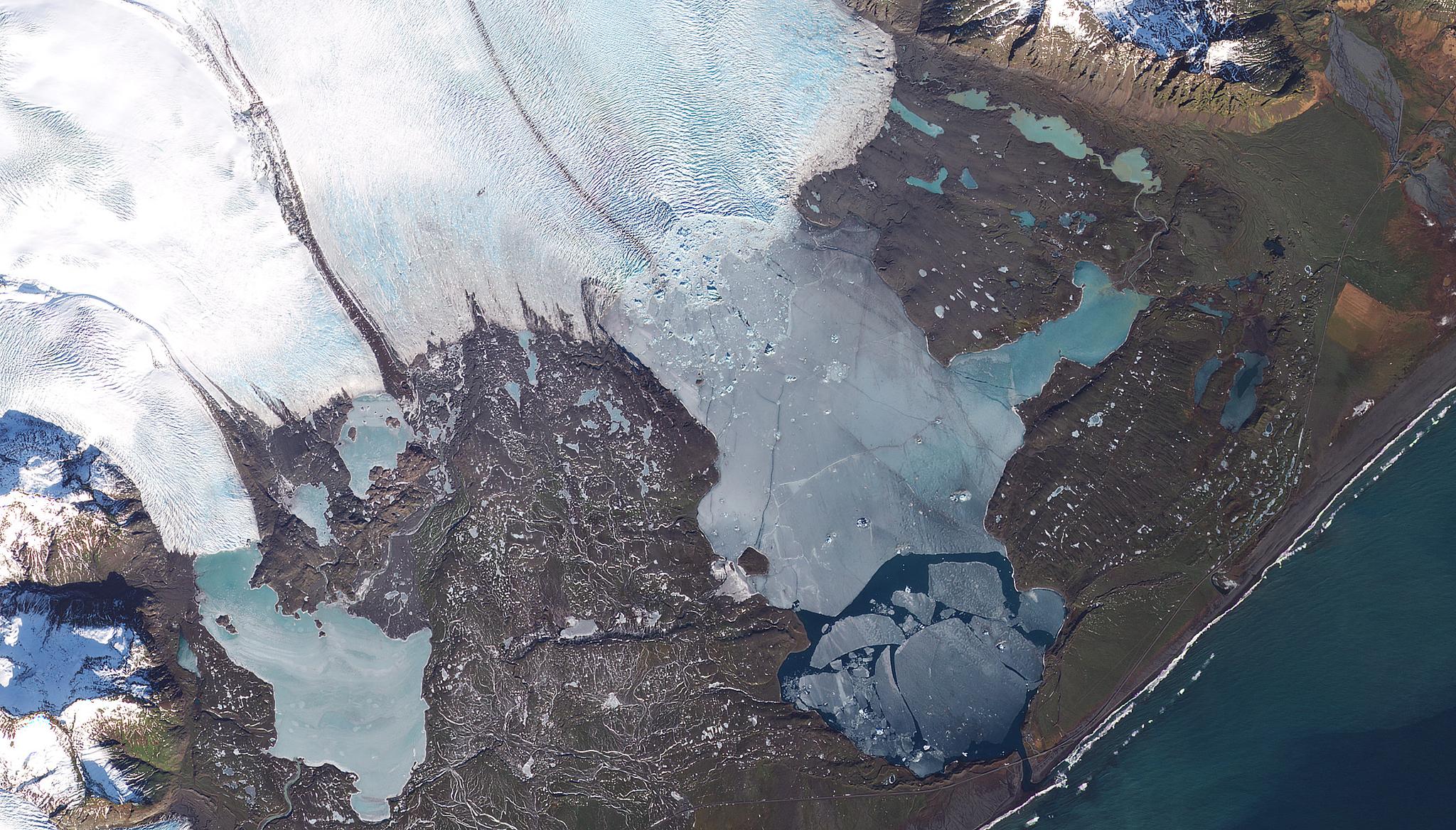Ice-dam Failures Revealed with PlanetScope Data
Image above: PlanetScope image of ice-dam study site in Jokulsarlon, Iceland taken March 2, 2023. © 2023, Planet Labs PBC. All Rights Reserved. In icy environments, mountain lakes can be dammed not by just rock, but by long standing ice formations. But with the ongoing retreat of glaciers and icecaps around the world, sudden floods from ice-dam instability may be causing increased global hazards. Historically, some of the largest flooding disasters have been due to failures in ice-dammed lakes, destroying mountain communities and industries. However, estimating exactly how these failures may be changing over time due to environmental factors is hard to evaluate as global flood databases are inconsistent. To address this, researchers from the University of Potsdam in Germany, ETH Zürich, the Federal Institute for Materials Research and Testing in Berlin, the Ministry of Forests in British Columbia, and Simon Fraser University in Canada have collected and systematized information on 1,569 ice-dam failures in six global mountain regions between 1900 and 2021. Their database consisted of collected reports from government records and news publications. They also generated site lake maps with data from Landsat satellite imagery starting in the 1980’s. For more recent years, the research team gathered Rapid Eye and PlanetScope data to generate their lake maps and evaluate peak water discharge, volume, annual timing of dam failures and source elevation. They noted that with PlanetScope’s higher spatial resolution, they were able to capture these lakes and dams in greater detail in recent years. Their study actually revealed that while there has not been an increased in ice-dam failures over this time, there has been a decrease in magnitude of the water released in the breaks, potentially suggesting that with glacial thinning, there is an increase in lake drainage prior to a dam break. Moreover, they also concluded that ice-dam failures are occurring on average approximately six weeks earlier in the year than they were in 1900. Find the full study in Nature.

Ready to Get Started
Connect with a member of our Sales team. We'll help you find the right products and pricing for your needs


